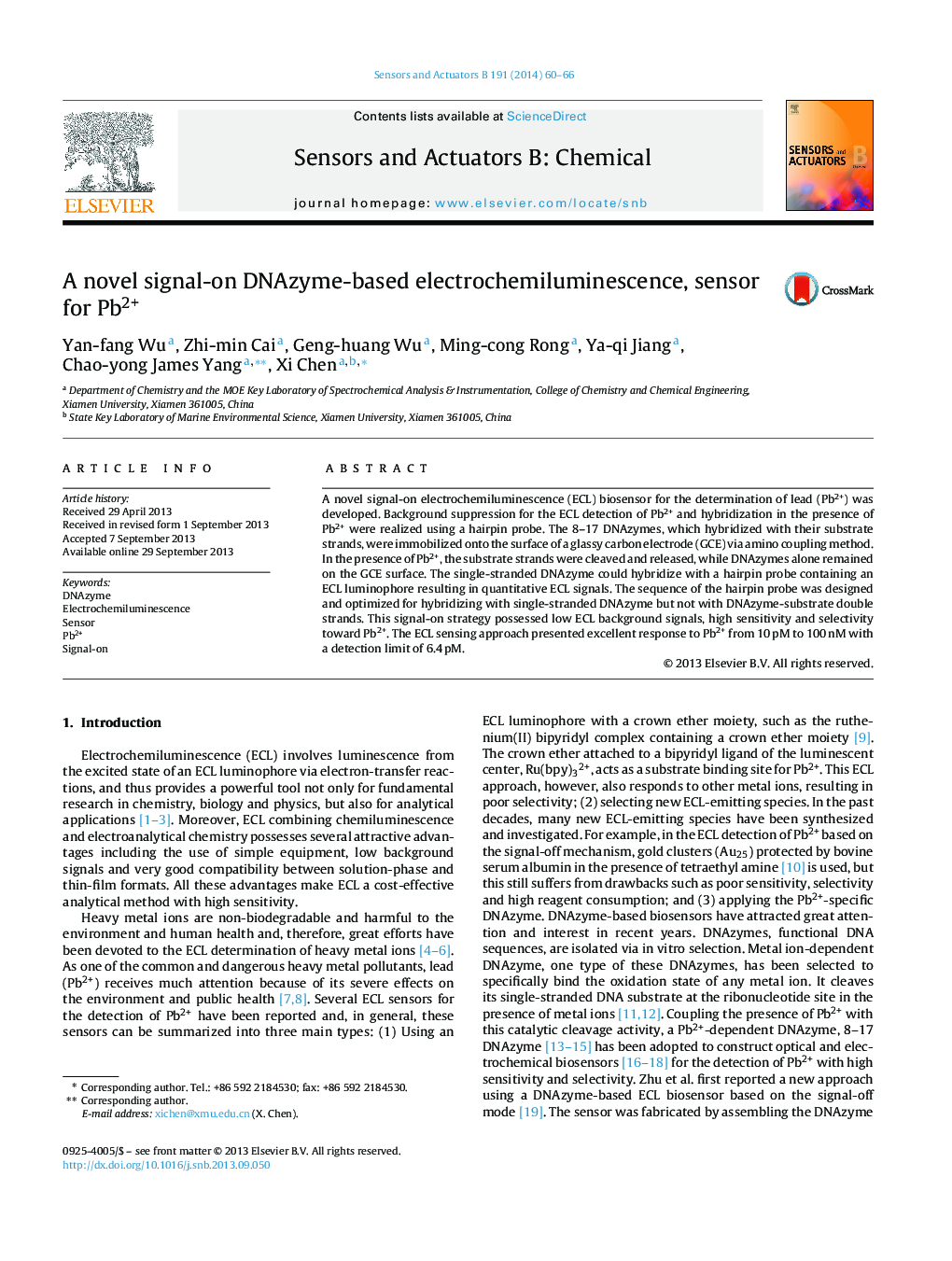| Article ID | Journal | Published Year | Pages | File Type |
|---|---|---|---|---|
| 7147242 | Sensors and Actuators B: Chemical | 2014 | 7 Pages |
Abstract
A novel signal-on electrochemiluminescence (ECL) biosensor for the determination of lead (Pb2+) was developed. Background suppression for the ECL detection of Pb2+ and hybridization in the presence of Pb2+ were realized using a hairpin probe. The 8-17 DNAzymes, which hybridized with their substrate strands, were immobilized onto the surface of a glassy carbon electrode (GCE) via amino coupling method. In the presence of Pb2+, the substrate strands were cleaved and released, while DNAzymes alone remained on the GCE surface. The single-stranded DNAzyme could hybridize with a hairpin probe containing an ECL luminophore resulting in quantitative ECL signals. The sequence of the hairpin probe was designed and optimized for hybridizing with single-stranded DNAzyme but not with DNAzyme-substrate double strands. This signal-on strategy possessed low ECL background signals, high sensitivity and selectivity toward Pb2+. The ECL sensing approach presented excellent response to Pb2+ from 10Â pM to 100Â nM with a detection limit of 6.4Â pM.
Related Topics
Physical Sciences and Engineering
Chemistry
Analytical Chemistry
Authors
Yan-fang Wu, Zhi-min Cai, Geng-huang Wu, Ming-cong Rong, Ya-qi Jiang, Chao-yong James Yang, Xi Chen,
